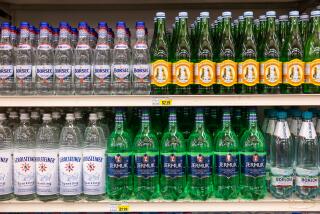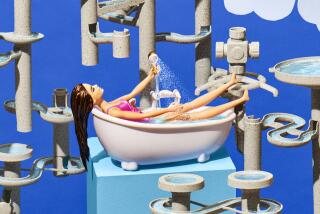Hydro Flask started out at farmers markets. Here’s how it got so huge
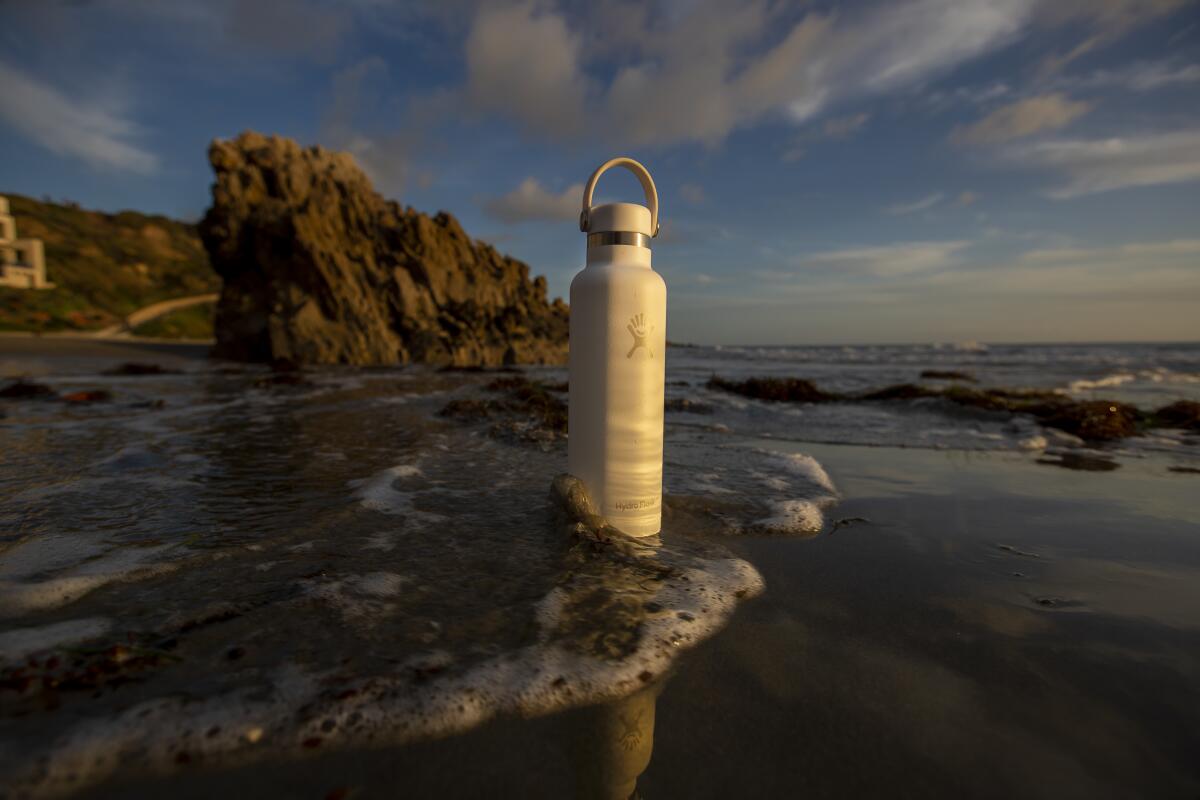
- Share via
Jelly shoes. JNCO jeans. Juicy Couture tracksuits. Ugg boots. Over the decades, any number of fashion pieces have enjoyed their moment as an “it” item. Now we’re in the era of must-have water bottle.
The Hydro Flask looks like what it is: a sleek, insulated, color-coated stainless-steel container for storing liquid.
How it distinguished itself from any other bottle at sporting goods stores and became a hot fashion accessory is a story about the convergence of several cultural threads: anxiety about the environment, a surge in attention to self-care and wellness, and the simple desire to keep hot drinks hot and cold drinks cold.
The result? A Hydro Flask has become the kind of gift that can send a tween into paroxysms of joy.
Newport Beach sixth-grader Ella Lin Espinosa put one at the top of her Christmas wish list. When she opened the present, “I literally freaked out and I was just screaming because I loved it so much!” she recalled, still giddy.
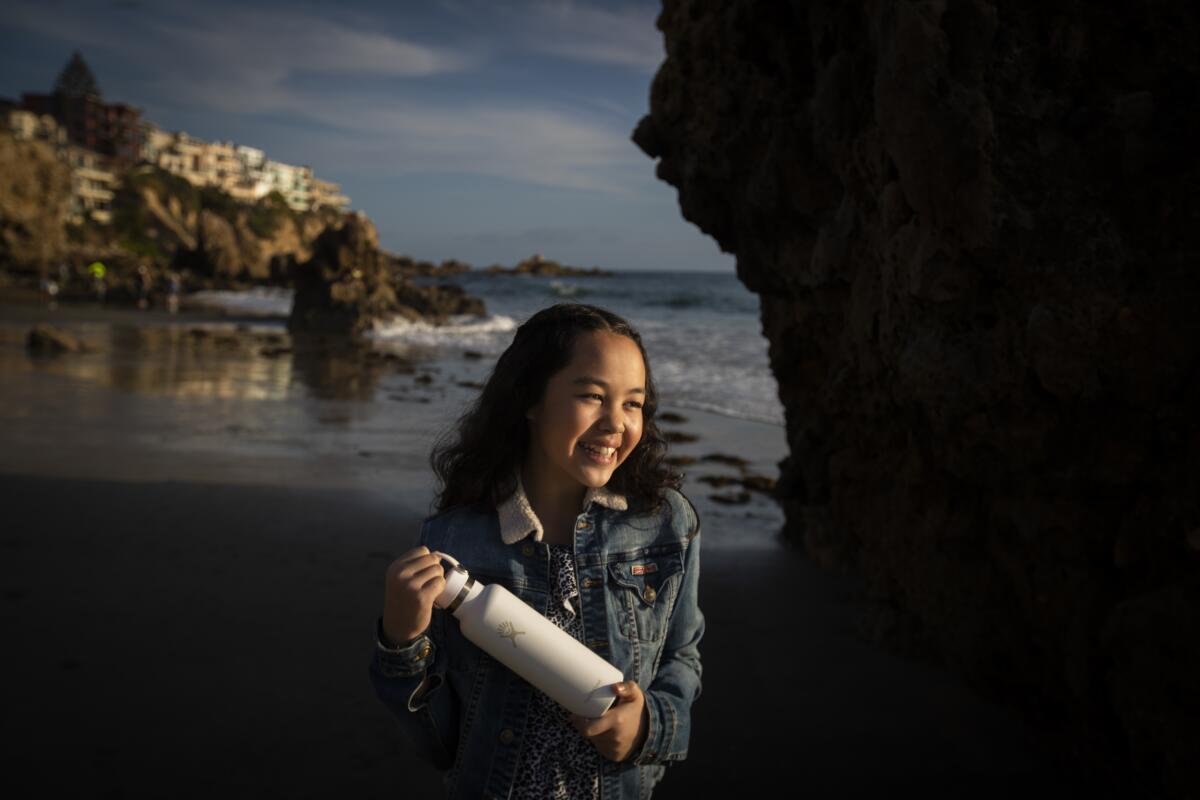
Hydro Flask is the rare mom-and-pop brand that won the hearts and minds of America’s youths and celebrities — after it sold out to a global conglomerate. And its success hinges on its ability to help its owner make not just a fashion statement but perhaps also a political one.
Toting a Hydro Flask — which starts at about $30 — shows off a person’s eco-chic credentials, said Richard Wilk, professor emeritus of anthropology at Indiana University Bloomington: It broadcasts the message, “Not only am I smart and stylish but I’m interested in saving the world.”
The thermos has been a consumer item for decades, with the Stanley name alone dating back a century. In recent years, Nalgene’s transparent plastic bottles experienced surges of popularity, especially after the brand started making them free of bisphenol A, a chemical commonly used in plastics.
Concerns about BPA’s health effects, in turn, helped bring Hydro Flask into existence.
In 2008, Travis Rosbach opted to make the switch to reusable bottles. He bought two metal bottles and wound up hating both.
His GSI bottle was too bulky to easily fit in his freezer, and its mouth too narrow to accept ice cubes, he said. “By the time I would get outside and sit down and go surf and come back, it would be almost, you know, boiling hot,” he said.
He didn’t like his Klean Kanteen either. Its lip was the wrong shape for him, so water would dribble on his face, he recalled.
So he and his then-girlfriend, Cindy Weber, decided to make a better bottle. Hydro Flask was born.
They moved to Bend, Ore., where outdoorsy culture thrives, and their bottle was a hit at farmers markets in the area. Campers and hikers flocked to it. Rosbach recalled some growing pains — they had to learn how to navigate the manufacturing process in China, and an early batch of 40,000 bottles arrived rusty and without insulation — but local enthusiasm kept them going, he said.
After they got their canteens into stores, Hydro Flask’s popularity expanded even further, Weber recalled.
“It just, like, exploded,” she said. “It was hard because we grew so fast ... and that was pretty exciting, but at the same time, your cash flow was difficult.”
As the company found more success, the couple’s relationship came apart. Rosbach and Weber broke up and sold their stakes to an investor in Bend. The way they saw it, Weber said, selling was the only way to keep up with the growth.
That created a path for longtime tech executive Scott Allan to take the helm, becoming president and chief executive in 2012. Under his guidance, Hydro Flask started selling in Europe; launched new items such as backpack-style water containers for people on the go; and stepped up its social media presence, securing promotion from influencers.
Then things really got huge. In 2016, consumer products conglomerate Helen of Troy swooped in, acquiring Hydro Flask for about $210 million. With its infusion of money, extensive relationships with manufacturers and ability to strike big sponsorship deals, Helen of Troy — whose stable of brands also includes Pur water filters, OXO kitchenware and Revlon hair tools — propelled Hydro Flask to dominance.
Helen of Troy had plenty of reason to be interested in Hydro Flask: Water bottles overall are having a big moment. U.S. sales leaped 42% last year to $318 million, and Hydro Flask was the top brand, according to research firm NPD Group.
Other competitors include Klean Kanteen as well as Yeti, an outdoorsy brand that also makes high-end coolers, and S’well, known for its distinct wine-bottle shape.
S’well might’ve been the “it” brand were it not for that recognizable shape, said Connie Pechmann, a marketing professor at the UC Irvine Paul Merage School of Business.
The brand offers a wide variety of shapes, colors and stylish patterns, but its flagship bottle has a narrow mouth. “I think S’well made a big mistake,” Pechmann said. You “couldn’t really fit an ice cube in them,” and the bottles were small enough to fit inconspicuously into backpacks.
“People aren’t putting [Hydro Flasks] in their backpacks,” she said. “They’re carrying them separately.”
That makes them highly visible — so carrying one becomes a statement, as well as an opportunity for users to showcase their identities. Teens personalize their Hydro Flasks with stickers and original artwork. They then show off their style on social media, reinforcing the Hydro Flask trend.
“In middle school, it was all about the S’well bottle,” said Whitney Todosiev, a Palos Verdes High School junior. “In high school during my sophomore year, I started seeing more and more Hydro Flasks. All of my friends in drama that had Hydro Flasks wouldn’t shut up about it. Now that I have one, I realize that I love mine.” She has even given her blue 32-ounce canteen a name: Barry.
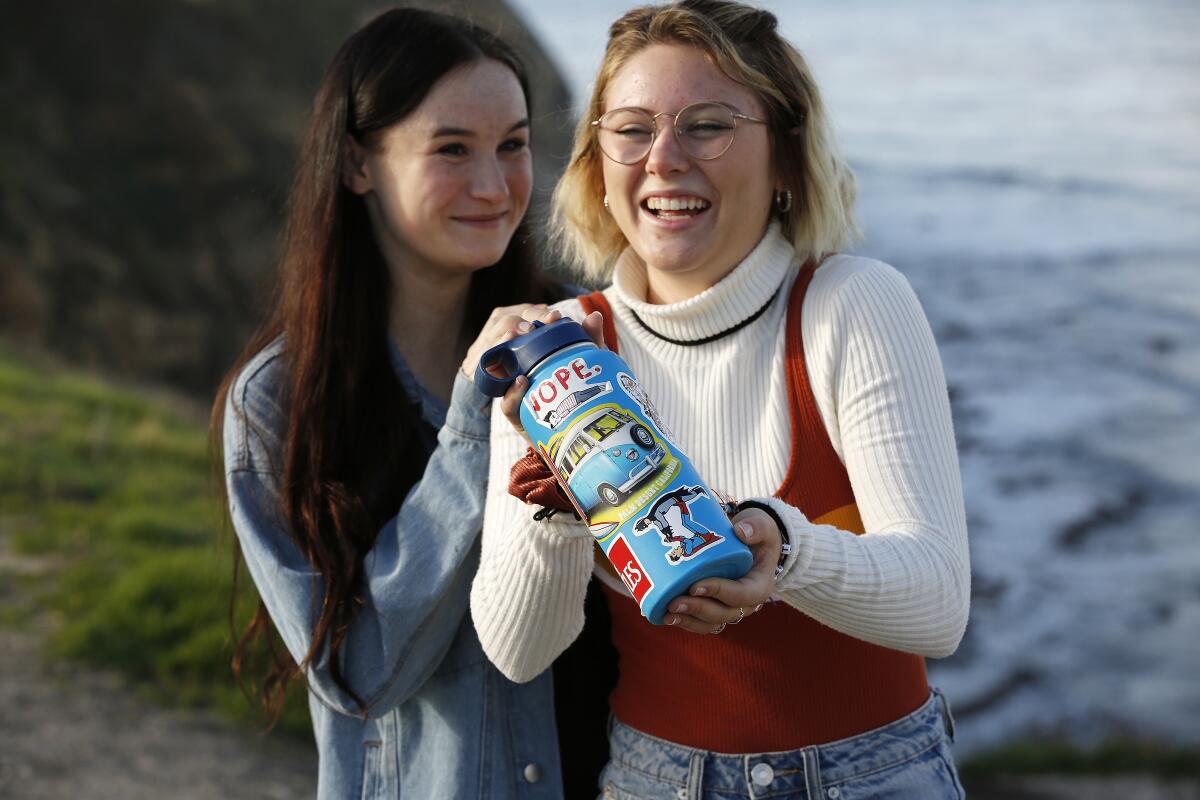
The brand has especially found love among “VSCO girls,” young women who embrace a beachy, easygoing, 1990s-inspired aesthetic. Named for photo-sharing app VSCO, the trend has social media in its DNA, which pumps a steady stream of Hydro Flask pictures into the minds of people looking to see what’s cool.
Celebrities such as Julianne Hough, Jenna Dewan and Jonah Hill have been spotted carrying Hydro Flasks after a workout or around town.
Helen of Troy doesn’t disclose sales figures for the brand, but the company’s housewares division — which consists only of Hydro Flask and kitchenware brand OXO — has been jumping. In its most recent quarter, which ended Nov. 30, the division had sales of $183.2 million, up 28.2% from the same quarter a year earlier.
The brand’s multiplicity of offerings gives people who already have one Hydro Flask reasons to get another. And maybe another after that.
With limited-edition series and several ways to mix and match colors and accessories, Hydro Flask creates a “just one more” feeling, according to analyst Robert J. Labick, president of CJS Securities. There’s the standard bottle and tumblers, plus specially created canteens to carry coffee, beer and wine. Those can all be customized with special caps and reusable straws. “You can have one, but if you don’t have a limited-edition shaved ice one, you have to have that one,” said Labick, who owns a Hydro Flask tumbler for coffee, 40-ounce and 30-ounce bottles for hiking and coaching games and a backpack-style container for hiking.
La Habra High School senior Natalia Losoya has two Hydro Flasks. She first got a 40-ounce blueberry-colored bottle to use for soccer practice and later scooped up an 18-ounce bottle to keep in her car. She enjoys how well it keeps her water cold, and noted that it’s cheaper to buy a canteen than keep shelling out for single-use bottles of water.
Environmental and health concerns, meanwhile, got her mother to jump on the bandwagon. “We recycle everything, so when I got a Hydro and told my mom, who is really health-conscious and knows about chemicals that are in water bottles, she freaked out over it and wanted one,” Natalia said.
Those motivators drive a lot of younger people toward the reusable bottles as well.
Fears about the effects of climate change have created a wave of activism among people in their teens and twenties, led most prominently by 17-year-old Greta Thunberg and motivated by a desire to protect their futures. A 2019 Washington Post-Kaiser Family Foundation poll found that more than 7 in 10 teenagers believe climate change will make a visible impact in their lifetimes.
“In a generation growing up in the shadow of climate change, there are very few public ways to show off your commitment to better the environment than carrying a reusable water bottle,” said Wilk, the anthropology professor.
Ella Lin is taking it a step further. As part of a school project focusing on students’ passions, she’s urging her peers to cut down on trash by embracing reusable items. Recycling is good too, she’s telling them, but only second best: “We should start by trying to reduce our waste.”
Hydro Flask is also benefiting from the soaring amount of attention Americans are paying to wellness and self-care.
U.S. consumer spending on health-related products and services soared 27% from 2013 to 2018 and isn’t expected to slow anytime soon, according to market research firm Mintel, which projected that the spending would balloon an additional 21% over the next five years.
Broadly, the category includes medical and mental-health activities but also encompasses exercising, cooking healthful meals — and drinking enough water.
Whitney, the Palos Verdes High junior, recalls there was a time when she wouldn’t drink water at all. “As soon as I got [the Hydro Flask], I started drinking more and more water,” she said. “I felt better.”
Allan, the CEO, said young people resonate with Hydro Flask because of their attitude toward life: “wanting to be outside, wanting to be healthier, wanting to take care of themselves and their planet and just wanting to be happier too.”
After nearly eight years at the helm, Allan will step down in March. The move is part of a multiyear plan, according to Helen of Troy, which said it won’t immediately fill his role. Allan told SGB Media last month that the goals he initially set were “largely achieved.”
An ongoing project, he told The Times, is for the company to improve its sustainability practices. It has tapped outdoor companies such as REI and Columbia Sportswear to learn about sourcing and labor conditions, and it’s trying to make more recyclable packaging, he said.
Most Hydro Flask products are made in China, where, he said, factory employees and third-party companies do audits and drop-ins to ensure a “toxic-free environment” and uphold safe working conditions.
Back in Newport Beach, Ella Lin’s Christmastime excitement hasn’t worn off. Her mother, Alison Yap, said the sixth-grader still uses her Hydro Flask every day. She cleans and refills it when she gets home from school. Before going to dance class, she’ll add some ice.
Stickers and drawings aren’t her style: She has kept the bottle sleek and pristine. “I love taking it to school and drinking out of it,” she said. “I feel confident ... just holding it.”
Times staff writer James F. Peltz contributed to this report.
More to Read
Inside the business of entertainment
The Wide Shot brings you news, analysis and insights on everything from streaming wars to production — and what it all means for the future.
You may occasionally receive promotional content from the Los Angeles Times.


